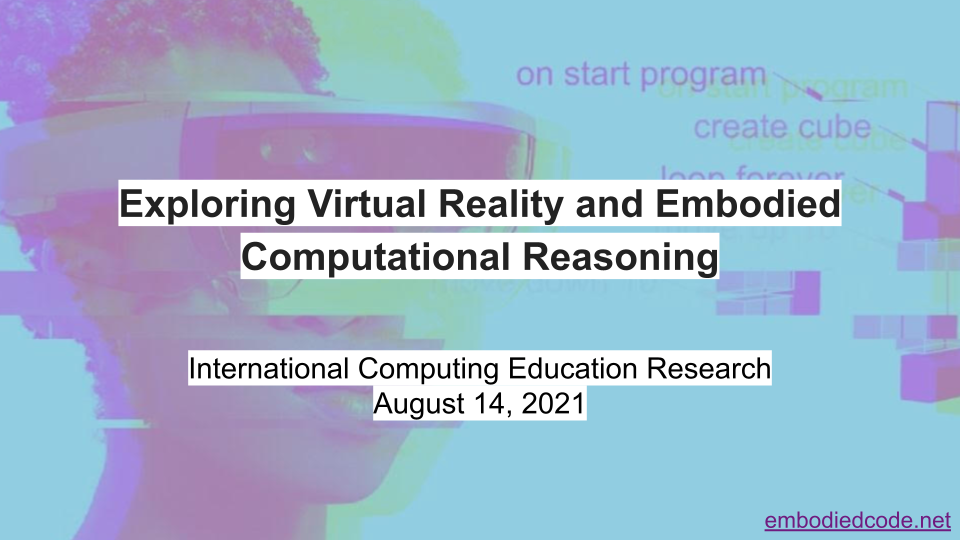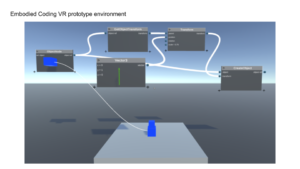
Dev Blog 2021 Recap
Ryan Lay
Dec 22, 2023
Although the project started officially before 2021, the project wouldn’t really make much headway until this year. The focus of this year, was to finish researching what we can do to build an effective Augmented Reality (AR) platform. We started by looking into existing Visual Programming Languages (VPL), methods of representation, and pedagogical practices that might be enhanced from an immersive environment. We discovered:
- that teachers praised block-based coding systems because they removed the execution gap between algorithms and implementation
- a reliance on visual systems such as flow diagrams and memory diagrams
- role-playing and storytelling strategies for breaking down algorithms
- a general lack of experimentation in projects without self-expression
- general positive reactions to collaborative experiences
- that most teachers in the sample adopted a coach / guide / facilitator teaching style for project-based learning.
Once the exploratory interviews were completed, we would begin with designing and building a Unity project that would some become the Embodied Coding Environment. One of the core theories motivating our design, was an emphasis on embodied cognition, cognition that is rooted in sensori-motor and perceptual experiences. Our goal was to find ways to support a virtual manifestation of the physical metaphors that teachers use to teach computational concepts.
By the end of the year, we would have a working prototype of a node-based visual programming language within the game space in virtual reality and would start presenting our findings.

With a working prototype, we presented a demo to the local San Diego chapter of the Computer Science Teacher Association (CSTA) where it was received warmly!

